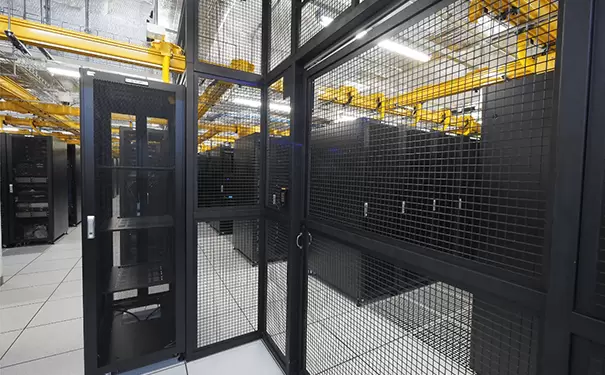How to Improve Cluster Website Server Stability? Optimize Configuration for Efficient Multi-Site Operation
In the age of the internet, cluster websites have become an important means for businesses to gain traffic and increase brand exposure. Especially in SEO optimization and marketing, managing and operating multiple sites together can improve efficiency and bring considerable benefits. However, stability issues with cluster website servers often trouble many webmasters, especially when running multiple sites simultaneously. Ensuring the stability and efficiency of each site becomes a critical challenge. This article provides server configuration optimization suggestions for cluster websites to help enhance multi-site stability and avoid issues like downtime and slow speeds caused by improper configuration.

Why is Server Configuration Optimization Crucial?
Cluster systems require hosting multiple sites on the same server, and the server’s performance and configuration directly affect site stability, speed, and overall performance. If the server configuration is inadequate or unreasonable, the following issues may arise:
- Slow Loading Speeds: Multiple sites sharing server resources may lead to slow loading speeds if resources are not properly allocated or are insufficient.
- Server Downtime: Excessive traffic or overuse of resources may cause the server to crash, leading to cluster service interruptions.
- SEO Ranking Impact: Cluster systems place high demands on search engines, and poor server stability may affect crawling and ranking performance.
- Security Risks: Multiple sites hosted on the same server may risk widespread failure if one site is attacked, compromising the entire cluster.
Therefore, optimizing server configuration is not only necessary for improving cluster stability but also helps enhance multi-site access efficiency and user experience.
Server Configuration Optimization Suggestions
1. Choose High-Performance Server Configuration
When renting a server for a cluster, performance is the most critical factor. It is recommended to choose high-performance CPUs, large amounts of memory, and high-speed hard drives to ensure the efficient operation of multiple sites.
- CPU: Choose multi-core, high-frequency processors to handle the load of running multiple sites. It is recommended to choose a CPU with at least 4 cores, and for larger traffic clusters, opt for more cores.
- Memory: Memory is crucial for smooth server operation. If the server’s memory is insufficient, multiple sites may experience performance degradation due to memory competition. It is recommended to choose at least 16GB of memory for smaller clusters, and 32GB or more for larger clusters.
- Hard Drive: Opt for SSDs rather than HDDs, as SSDs offer faster read and write speeds, significantly improving site response times, especially for large data storage.
2. Properly Configure Bandwidth
Cluster systems often involve concurrent access to multiple sites, so sufficient bandwidth is needed to ensure the normal operation of each site. If bandwidth is insufficient, it may cause slow access speeds, lag, and other issues.
- Bandwidth Selection: Estimate bandwidth requirements based on the cluster website traffic. Smaller clusters can choose bandwidth in the range of 10Mbps to 50Mbps, while larger clusters may require 100Mbps or higher.
- CDN Acceleration: To optimize access speed, a Content Delivery Network (CDN) can be configured. CDN caches content across multiple nodes, reducing the load on a single server and improving access speed for users nationwide.
3. Implement Load Balancing Configuration
Cluster systems often need to handle high levels of concurrent traffic, and a single server may struggle to handle the load. In this case, load balancing becomes essential.
- Load Balancing: Use a load balancer to evenly distribute traffic across multiple servers to avoid overloading a single server. Load balancing can be implemented using hardware, software, or cloud services to ensure stable operation across multiple sites.
- DNS Load Balancing: For larger clusters, DNS load balancing can be configured to distribute traffic across multiple IP addresses. Using smart DNS strategies, ensure that user requests reach the most optimal server node.
4. Regular Monitoring and Performance Optimization
To ensure server stability, regular performance monitoring and optimization are essential. Monitoring tools can be used to track the server’s performance in real time, allowing you to identify and address potential issues quickly.
- Use Monitoring Tools: Tools such as Zabbix or Prometheus can monitor CPU, memory, hard drive, and bandwidth usage in real time. If resource bottlenecks or anomalies are detected, adjustments or fixes can be made immediately.
- Website Performance Optimization: Perform regular optimization tasks like image compression, cache optimization, and database tuning to reduce the server's load and improve website loading speeds and user experience.
5. Strengthen Security Measures
Cluster systems involve multiple sites hosted on the same server, so robust server security measures are necessary to prevent hacking attempts or malicious access.
- Firewall: Configure strict firewall rules to allow access from only specific IP addresses, protecting against DDoS attacks and malicious traffic.
- Regular Updates and Patching: Keep the operating system and software up to date, promptly patching any security vulnerabilities to prevent exploitation by hackers.
- Backup Strategy: Regularly back up data to ensure that, in the event of server downtime or data loss, the system can be restored promptly, ensuring the reliability of the cluster system.
6. Separate Sites and Databases
To improve the performance and stability of a cluster system, it is advisable to separate sites and databases. Hosting the database on an independent server can prevent the database from overloading the site server.
- Database Separation: By separating the database from the site, the overall performance of the cluster can be improved, reducing the strain on the site server.
- Database Optimization: Regularly optimize the database by indexing, query optimization, etc., to ensure it responds quickly to site requests and prevent database bottlenecks from affecting site speed.
Summary
The configuration optimization of cluster servers directly determines the stability and performance of multi-site systems. When renting a server, factors like CPU, memory, bandwidth, load balancing, and security must be carefully considered. By optimizing these resources and combining them with regular monitoring, performance optimization, and security enhancements, multi-site stability can be greatly improved.
Server configuration optimization for cluster systems is a systematic process. Only with detailed adjustments and improvements in all aspects can the cluster system operate stably in the long term, improve user experience, and promote the successful operation of the cluster.

